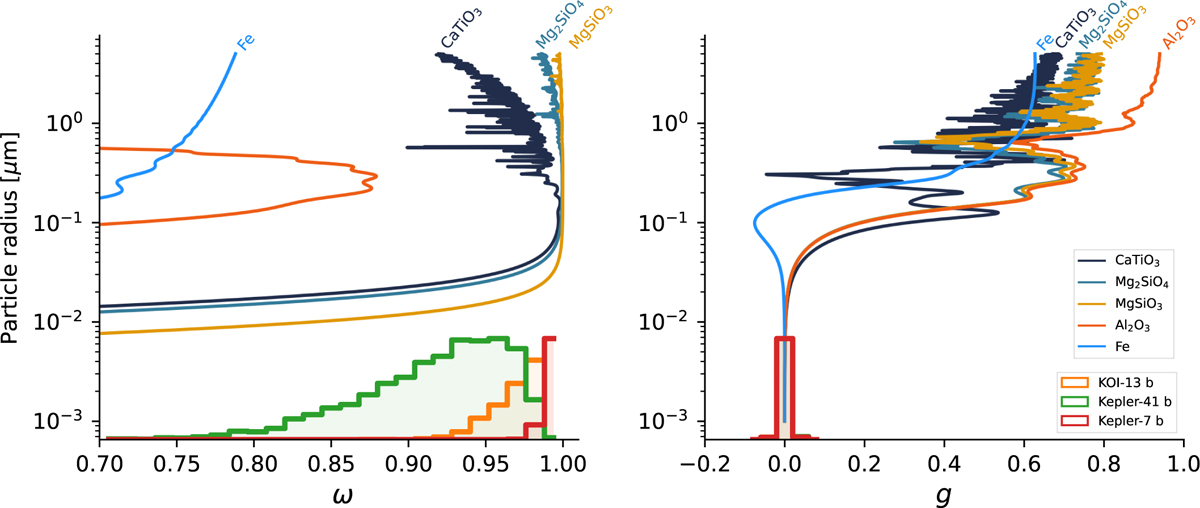Fig. 11

Download original image
Predictions from Mie theory for the reflectance properties of several refractory species assuming spherical, monodisperse particles observed in the Kepler bandpass as a function of particle radius (Kitzmann & Heng 2018, curves above), for comparison with the posterior distributions for the reflectance parameters from Kepler observations (histograms). The measured single scattering albedos ω of each planet (also shown in Fig. 14) have 0.7 ≲ ω ≲ 1, placing a lower limit on the particle radius r ≳ 0.01 µm. The phase curves are consistent with scattering asymmetry parameters g < 0.2, though posterior distributions are so narrow as a result of the prior distribution. Fits consistent with near-zero g correspond to upper limits on particle radii of r ≲ 0.1 µm. The three species consistent with the phase curve observations for Kepler-7 b and Kepler-41 b are CaTiO3 (perovskite), Mg2SiO4 (forsterite), and MgSiO3 (enstatite), given that they have ω > 0.9 and near-zero g. We compare the condensation temperatures of each of these species with the local temperatures at the longitudes of the less reflective region in Fig. 12.
Current usage metrics show cumulative count of Article Views (full-text article views including HTML views, PDF and ePub downloads, according to the available data) and Abstracts Views on Vision4Press platform.
Data correspond to usage on the plateform after 2015. The current usage metrics is available 48-96 hours after online publication and is updated daily on week days.
Initial download of the metrics may take a while.


